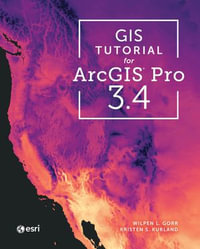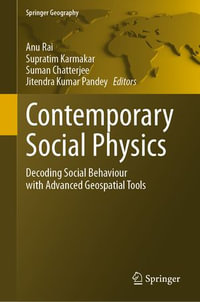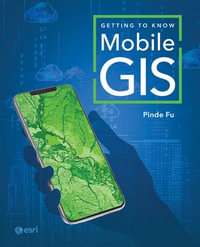Abbreviations
About the companion website
Chapter 1: Introduction to Structure from Motion for the geosciences
1.1. The geosciences and related disciplines
1.2. Aim and scope of this book
1.3. The time and the place
1.4. What is Structure from Motion?
1.5. Structure of this book
References
Chapter 2: The place of Structure from Motion: a new paradigm in topographic surveying?
2.1. Introduction
2.2. Direct topographic surveying
2.3. Remote digital surveying
2.4. Chapter summary
References
Further Reading/Resources
Chapter 3: Background to Structure from Motion
3.1. Introduction
3.2. Feature Detection
3.3. Keypoint Correspondence
3.4. Identifying Geometrically Consistent Matches
3.5. Structure from Motion
3.6. Scale and Georeferencing
3.7. Optimization of Image Alignment
3.8. Clustering for Multi View Stereo
3.9. Multi View Stereo Image Matching Algorithms
3.10. Summary
References
Further Reading/Resources
Chapter 4: Structure from Motion in practice
4.1. Introduction
4.2. Platforms
4.3. Sensors
4.4. Acquiring images and control data
4.5. Software
4.6. Point cloud viewers
4.7. Filtering
4.8. Generating digital elevation models (DEMs) from point clouds
4.9. Key issues
4.10. Chapter summary
References
Further reading
Chapter 5: Quality assessment: quantifying error in Structure from Motion-derived topographic data
5.1. Introduction
5.2. Validation Data Sets
5.3. Validation Methods
5.4. Survey Platform
5.5. Error Metrics
5.6. Distribution of Ground Control Points
5.7. Terrain
5.8. Software
5.9. Camera
5.10. Summary
References
Further Reading/Resources
Chapter 6: Current applications of Structure from Motion in the geosciences
6.1. Introduction
6.2. Use of SfM-MVS-derived orthophotograph mosaics
6.3. Use of SfM-MVS for 3D point clouds
6.4. Use of SfM-MVS for gridded topography
6.5. Combined orthophotograph and point cloud analysis
6.6. Crossing temporal scales: Examples of change detection to suggest process dynamics
6.7. Practitioner-based SfM-MVS
6.8. Chapter summary
References
Further Reading/Resources
Chapter 7: Developing Structure from Motion for the geosciences: future directions
7.1. Introduction
7.2. Developments in hardware
7.3. Progressive automation of acquisition
7.4. Efficient management and manipulation of photographs
7.5. Point cloud generation and decimation
7.6. Real-time SfM-MVS and instant maps: Simultaneous Localization And Mapping (SLAM)
7.7. Augmented reality
7.8. Detection of object or surface motion: non-rigid SfM (NRSfM)
7.9. Chapter summary
References
Further Reading/Resources
Chapter 8: Concluding recommendations
8.1. Key Recommendation 1: get 'under the bonnet' of SfM-MVS to become more critical end-users
8.2. Key Recommendation 2: get coordinated to understand the sources and magnitudes of error
8.3. Key Recommendation 3: focus on the research question
8.4. Key Recommendation 4: focus your efforts on data processing
8.5. Key Recommendation 5: learn from other disciplines
8.6. Key Recommendation 6: harness the democratising power of SfM-MVS
Index
























